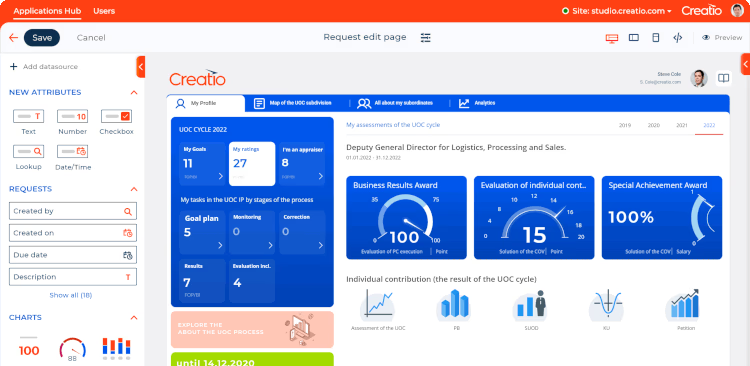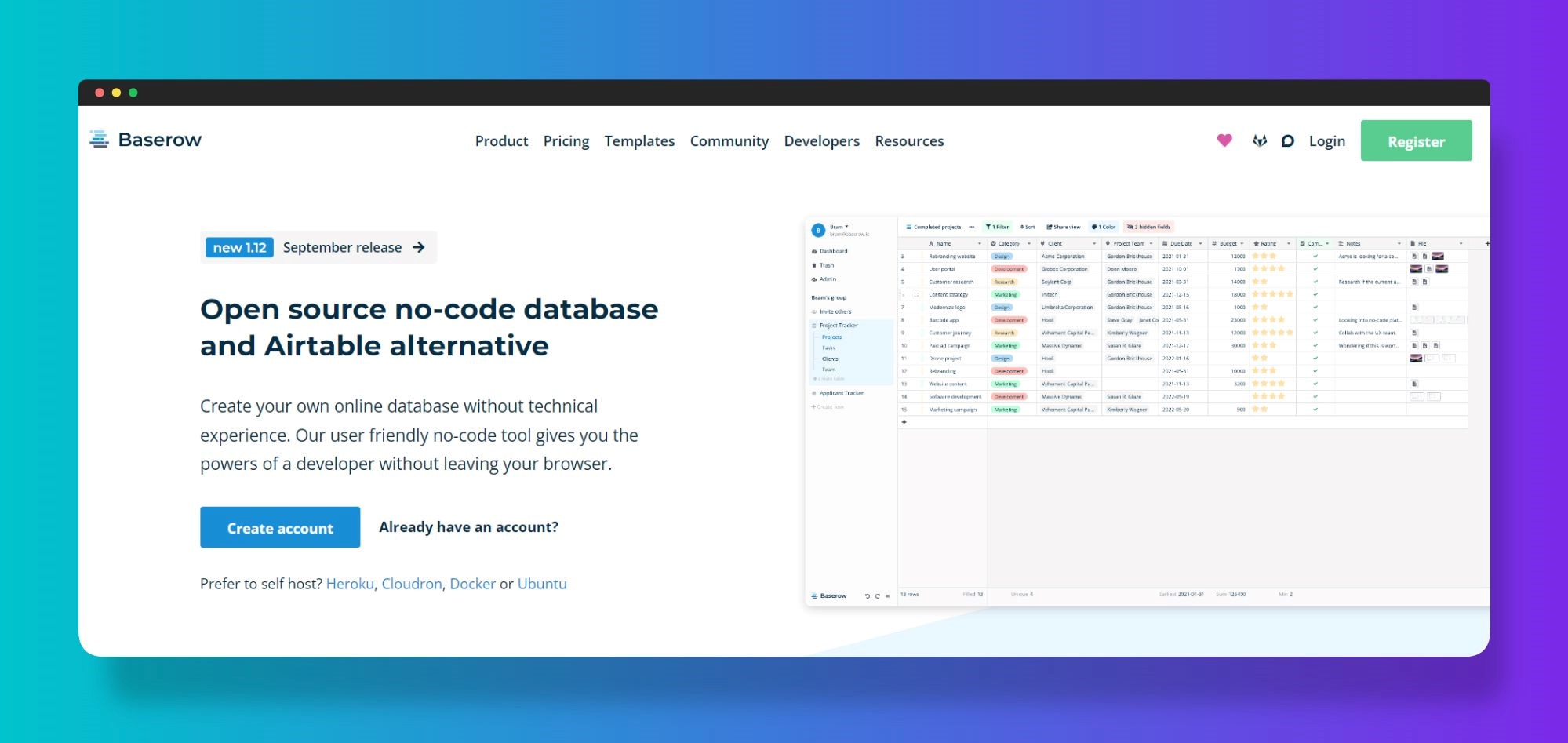Discover Exactly How Scalable Data Sources Can Be Utilized Without Coding to Improve Your Service Operations
In today's fast-paced organization atmosphere, the ability to manage and analyze information successfully is paramount. Scalable data sources, particularly when matched with no-code services, supply a transformative strategy that equips non-technical customers to improve procedures. By employing tools that call for no coding experience, organizations can improve their functional capabilities while lessening dependancy on IT resources. The real concern exists in recognizing just how these solutions can be tailored to particular service demands and what possible obstacles may develop in their application. Checking out these elements can illuminate the path to functional quality.
Recognizing Scalable Databases
Scalable data sources are crucial for modern-day company operations, allowing organizations to efficiently take care of enhancing quantities of information without giving up efficiency. These databases are made to expand and adapt to the changing needs of a service, guaranteeing that they can handle larger datasets and even more complex questions as business requirements advance.
Understanding scalable data sources entails acknowledging their 2 main kinds: vertical scaling and straight scaling. Vertical scaling, or "scaling up," involves adding even more power (CPU, RAM) to an existing server to improve efficiency. Alternatively, straight scaling, or "scaling out," requires adding much more servers to distribute the lots, which typically causes greater versatility and mistake resistance.
An additional essential aspect is the architecture of scalable databases, which can be either non-relational or relational. Relational databases, such as MySQL and PostgreSQL, are structured and use SQL for inquiries, while non-relational data sources, like MongoDB and Cassandra, use more flexibility with disorganized information.
Ultimately, comprehending scalable databases is important for businesses intending to utilize information as a strategic property, enabling them to continue to be affordable in a significantly data-driven environment.

Benefits of No-Code Solutions
Unlocking the possibility of no-code services encourages businesses to streamline procedures and boost efficiency without the need for extensive programming knowledge. These systems enable non-technical users to produce, change, and take care of data sources easily, thus democratizing accessibility to technology throughout groups.
Among the primary benefits of no-code options is their rate of execution. Services can rapidly deploy applications and automate processes, dramatically decreasing the moment invested in growth cycles. This agility makes it possible for organizations to respond promptly to market adjustments and client requirements, cultivating an one-upmanship.
Furthermore, no-code systems decrease dependence on IT departments for day-to-day jobs, allowing technological teams to concentrate on more complicated jobs that call for specialized abilities. This shift not only optimizes resource appropriation but likewise advertises innovation within the organization.
Cost-effectiveness is one more advantage, as no-code services can reduce growth and upkeep costs. By lessening the requirement for coding knowledge, companies can harness the capacities of their existing workforce without the overhead of hiring added employees.
Popular No-Code Database Tools
The increase of no-code options has actually resulted visit this web-site in the emergence of different database devices that satisfy businesses looking for efficiency and availability. Read Full Article These tools equip users with minimal technological know-how to develop, handle, and adjust databases effortlessly.

Caspio stands out for its ability to develop internet applications with no coding. It allows organizations to develop robust databases and deploy applications quickly, dealing with different market requirements. Knack supplies effective information and straightforward interfaces administration capabilities, making it possible for organizations to develop custom applications tailored to their process.

Usage Instances in Service Procedures
How can businesses leverage data source tools to improve their operations? Scalable databases offer companies with effective capabilities to manage and examine data without the demand for substantial coding understanding. These tools can streamline various service procedures, ultimately leading to improved efficiency and efficiency.
One noticeable usage instance is customer relationship management (CRM) Businesses can use scalable data sources to track customer interactions, preferences, and comments, enabling individualized communication and better solution. By streamlining this details, groups can team up better and react to customer requirements in real-time.
One more significant application is supply administration. Firms can utilize no-code database tools to monitor supply degrees, track shipments, and projection demand. This ensures optimum supply levels, reduces waste, and reduces stockouts.
In addition, project monitoring can take advantage of scalable data sources by permitting teams to take care of tasks, due dates, and resources in a linked system. With real-time updates and data description visualization, project supervisors can make educated decisions.
Obtaining Started With Implementation
Applying scalable databases in service operations needs a structured strategy to ensure effective integration and use. The initial step is to conduct a detailed needs evaluation, recognizing certain business demands, information kinds, and expected growth patterns. This fundamental understanding will certainly assist the selection of the appropriate data source solution.
Next, select a straightforward, no-code database platform that lines up with your functional goals. no-code. Many modern options use intuitive user interfaces, allowing non-technical customers to manage data successfully. After choosing a platform, develop a clear information design that lays out how data will certainly be arranged, accessed, and maintained
Training is vital; make sure that team participants are equipped with the essential skills to make use of the data source. Take into consideration offering tutorials or workshops to familiarize team with the system's capabilities.
Conclusion
Finally, the integration of scalable data sources with no-code options offers significant benefits for business procedures. These systems equip non-technical users to effectively take care of and analyze information, helping with boosted decision-making and cooperation. By embracing tools such as Airtable and Notion, companies can minimize and improve procedures reliance on IT resources. Inevitably, leveraging these modern technologies can result in boosted efficiency and operational performance, placing services for sustained development in an affordable landscape.
One popular no-code database device is Airtable, which incorporates the functionality of a spread sheet with the power of a data source.Exactly how can companies take advantage of data source devices to enhance their operations? Services can utilize scalable data sources to track consumer communications, preferences, and responses, allowing individualized interaction and far better service.Executing scalable databases in business procedures calls for an organized approach to ensure successful assimilation and application.In conclusion, the combination of scalable data sources via no-code solutions presents considerable benefits for service procedures.